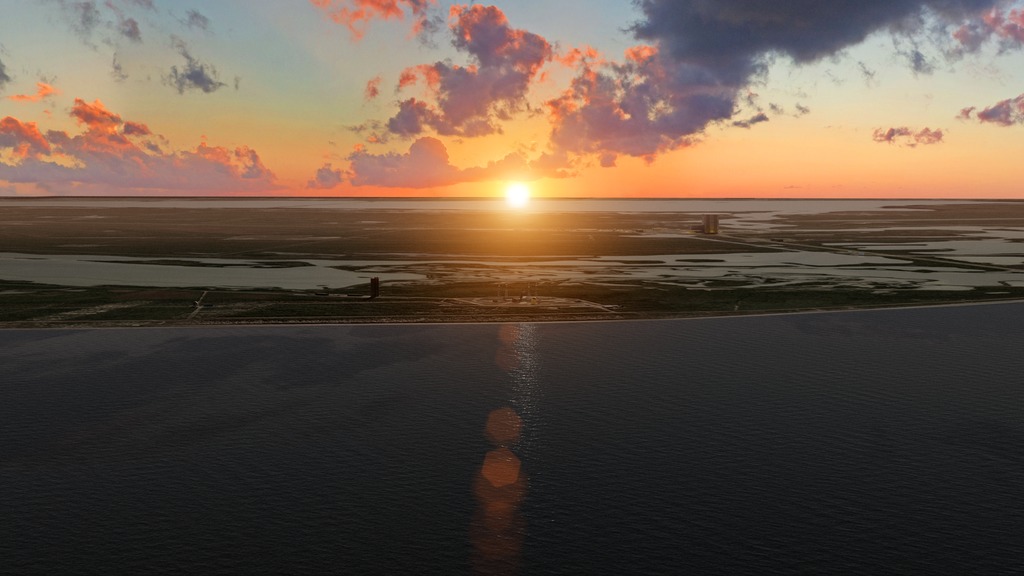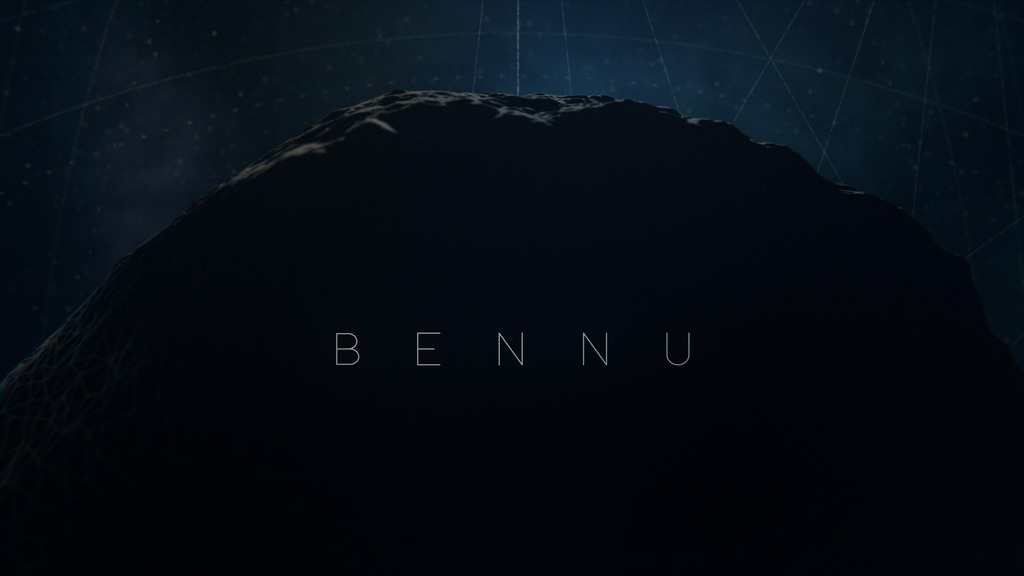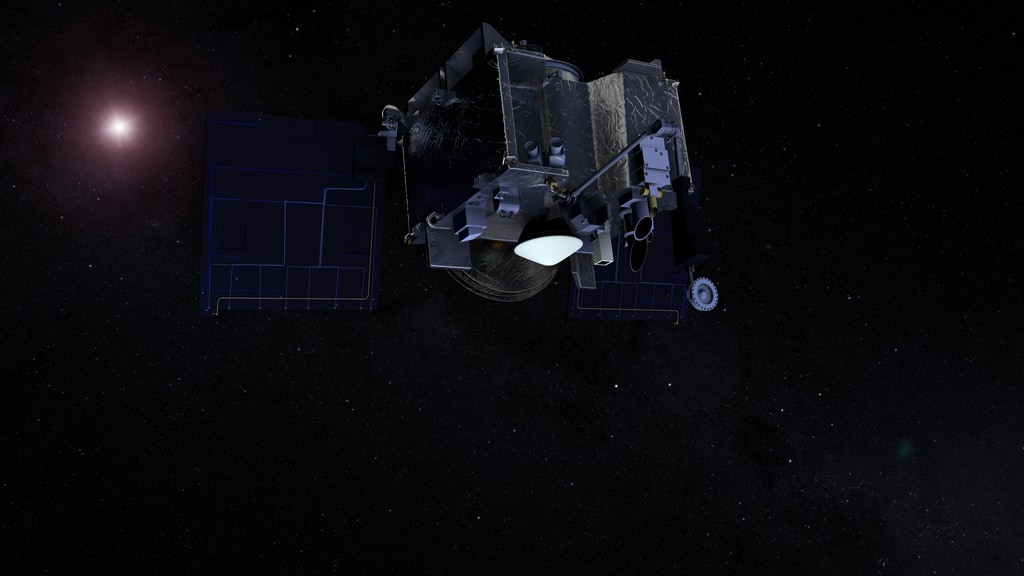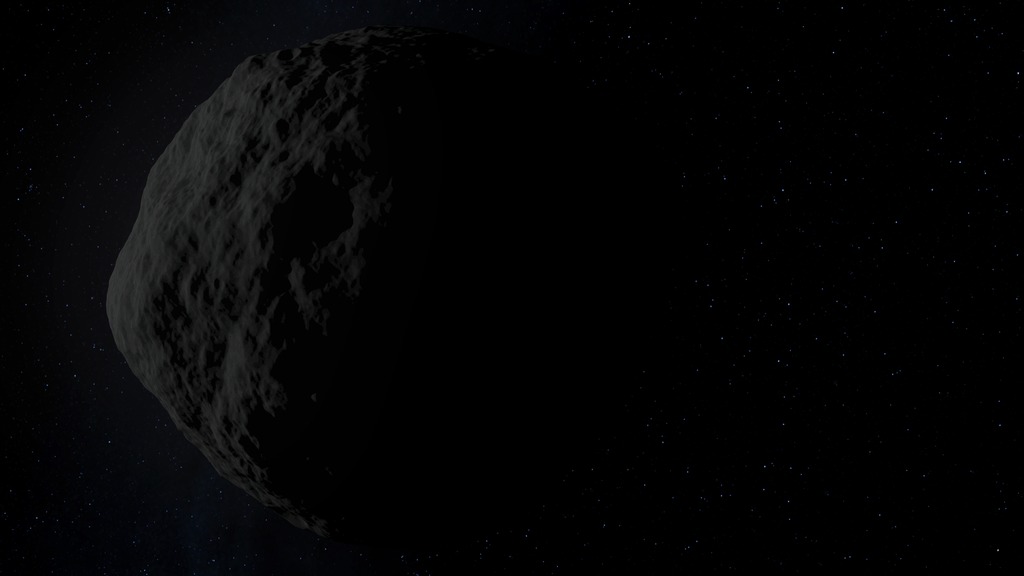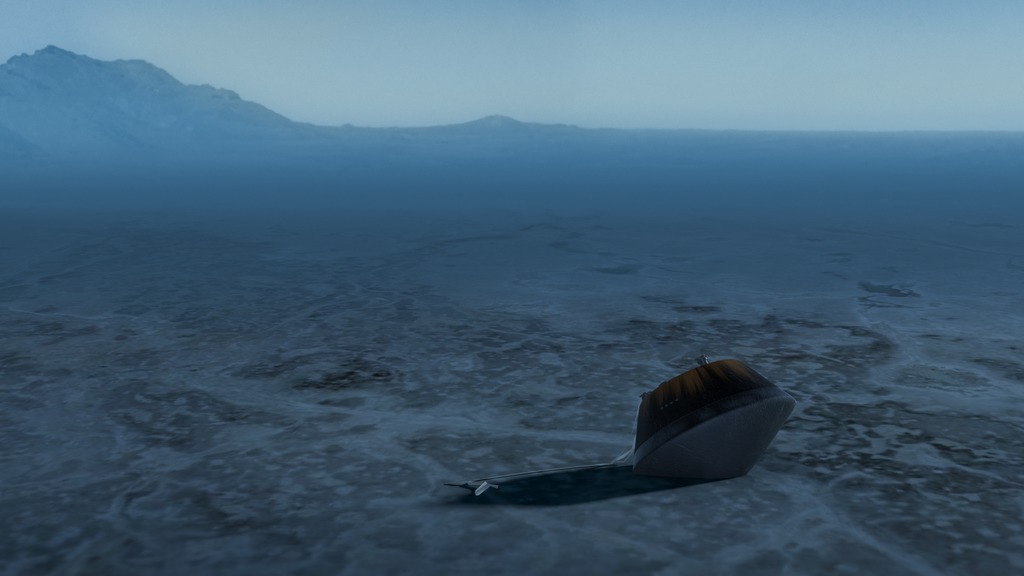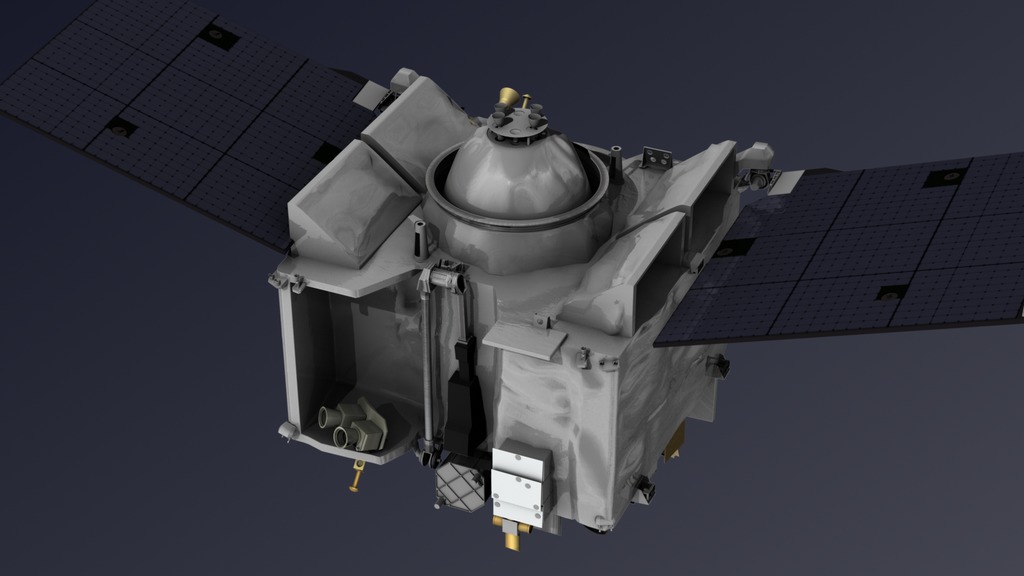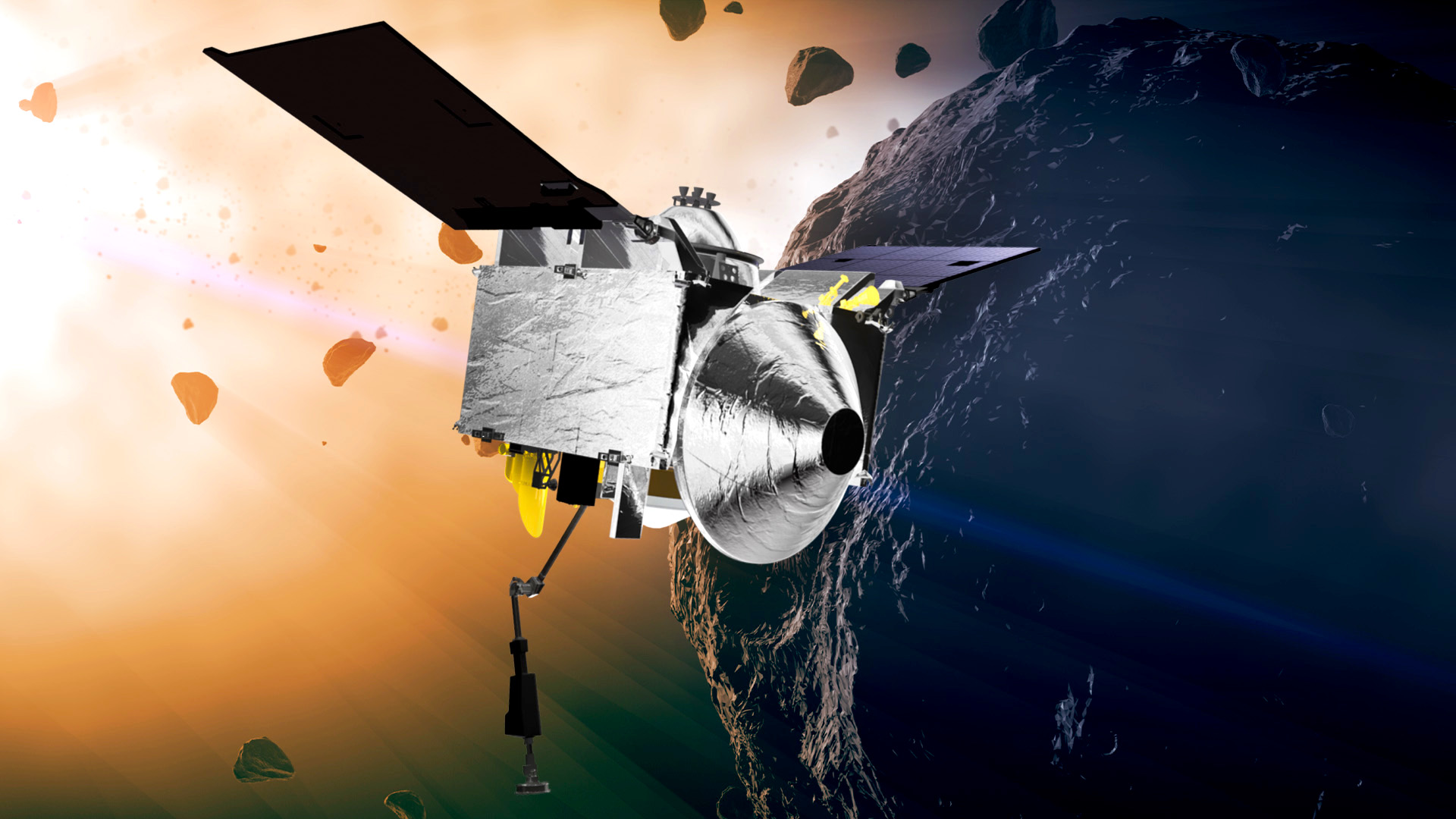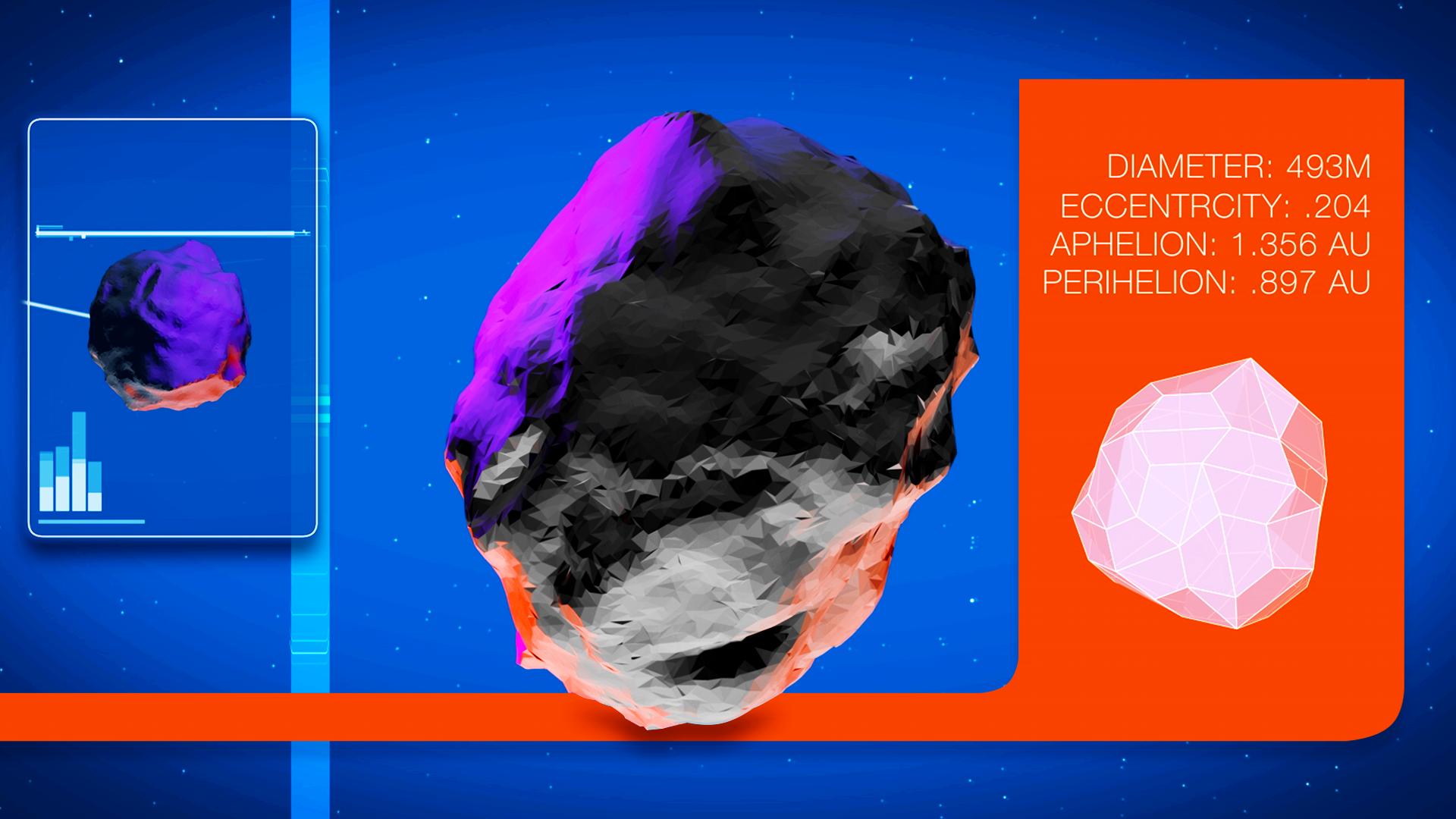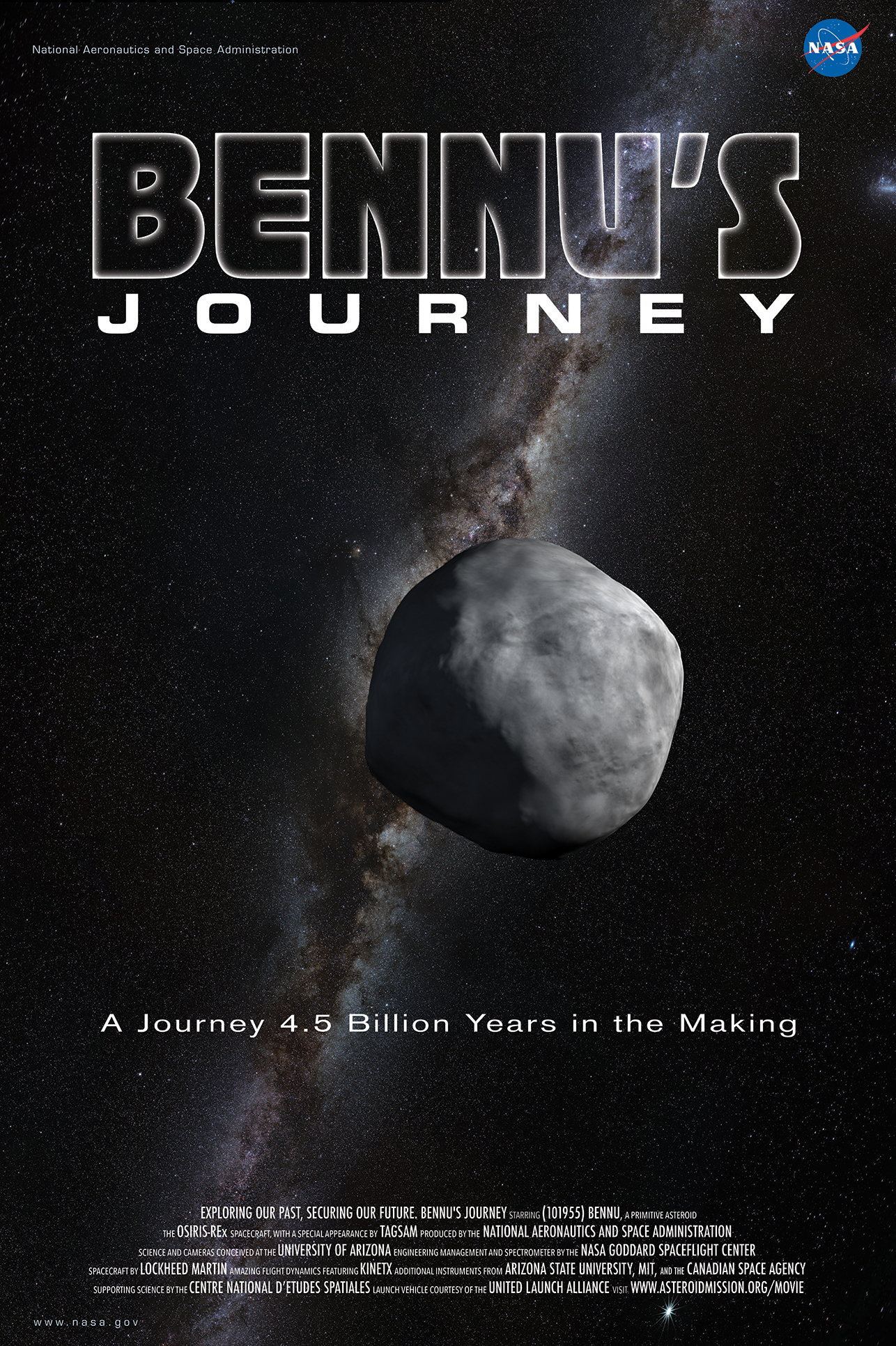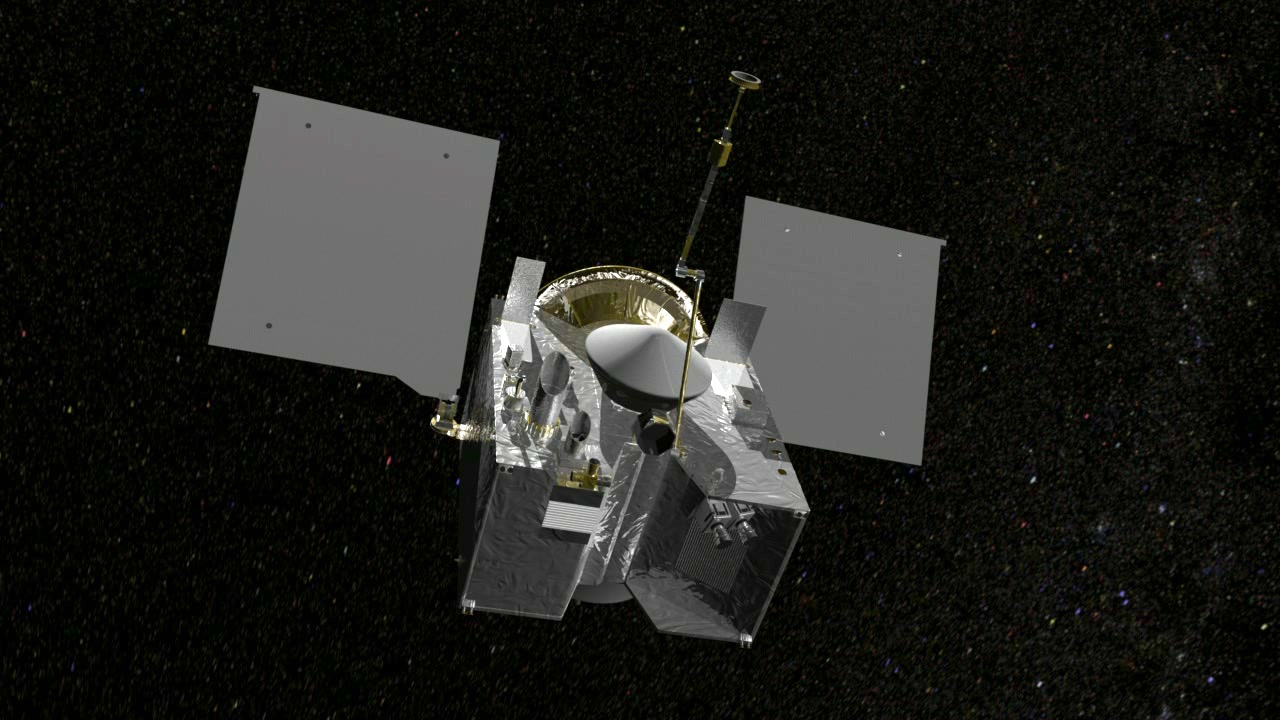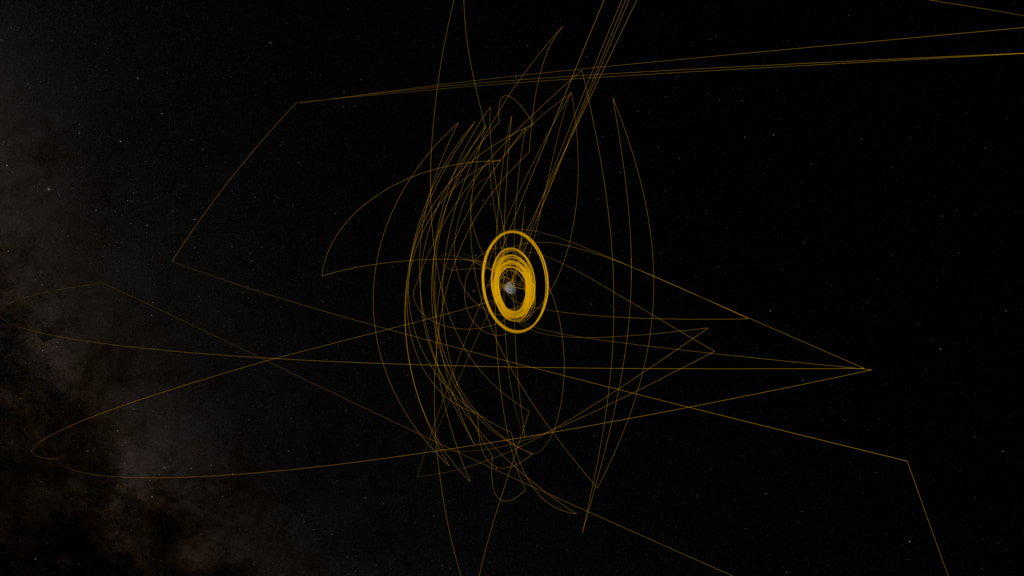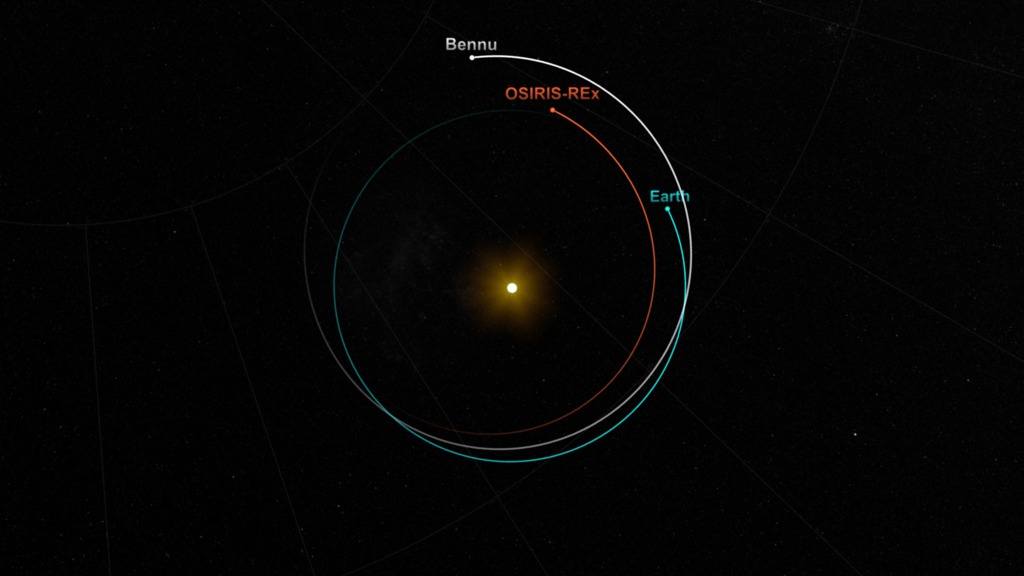OSIRIS-REx L-14 Press Briefing Graphics
OSIRIS-REx is on a mission to study asteroid Bennu and return a sample to Earth. The graphics on this page were created to support the OSIRIS-REx L-14 press briefing at NASA headquarters on August 17, 2016. All videos are available for download in broadcast quality. The majority of the videos do not contain audio. Links to 4K-resolution versions appear at the bottom of the page.
Watch the OSIRIS-REx L-14 press conference.
Learn more about OSIRIS-REx from NASA and the University of Arizona.
- Gordon Johnston - Spacecraft introduction

- Gordon Johnston - OSIRIS-REx mission timeline

- Gordon Johnston - OSIRIS-REx mission partners

- Jeffrey Grossman - New Frontiers overview

- Jeffrey Grossman - Asteroid exploration timeline
- Jeffrey Grossman - OSIRIS-REx exploration
- Jeffrey Grossman - Previous sample return missions
- Dante Lauretta - OSIRIS-REx mission acronym
- Dante Lauretta - Origins
- Dante Lauretta - Spectral Interpretation
- Dante Lauretta - Resource Identification
- Dante Lauretta - Security
- Dante Lauretta - Regolith Explorer
- Christina Richey - Asteroid Bennu accessibility
- Christina Richey - Asteroid Bennu size
- Christina Richey - Asteroid Bennu composition
- Rich Kuhns - OSIRIS-REx construction and shipping
- Rich Kuhns - TAGSAM testing
- Rich Kuhns - TAGSAM animation
- Mike Donnelly - OSIRIS-REx instruments
- Mike Donnelly - Kennedy Space Center arrival

TV Backdrop - Large-format image of OSIRIS-REx preparing to sample asteroid Bennu
For More Information
See NASA.gov
Credits
Please give credit for this item to:
NASA's Goddard Space Flight Center
-
Principal investigator
- Dante Lauretta (The University of Arizona)
-
Producer
- Dan Gallagher (USRA)
-
Animators
- Walt Feimer (HTSI)
- Michael Lentz (USRA)
- Adriana Manrique Gutierrez (USRA)
- Lisa Poje (USRA)
-
Kel Elkins
(USRA)
- Chris Meaney (HTSI)
- Chris Smith (SLAC)
- Tyler Chase (USRA)
-
Editor
- Dan Gallagher (USRA)
-
Videographers
- John Caldwell (Advocates in Manpower Management, Inc.)
- Rob Andreoli (Advocates in Manpower Management, Inc.)
- Katrina Jackson (USRA)
- Symeon Platts (The University of Arizona)
- Adam Mattivi (Lockheed Martin)
Missions
This page is related to the following missions:Release date
This page was originally published on Wednesday, August 17, 2016.
This page was last updated on Wednesday, May 3, 2023 at 1:48 PM EDT.
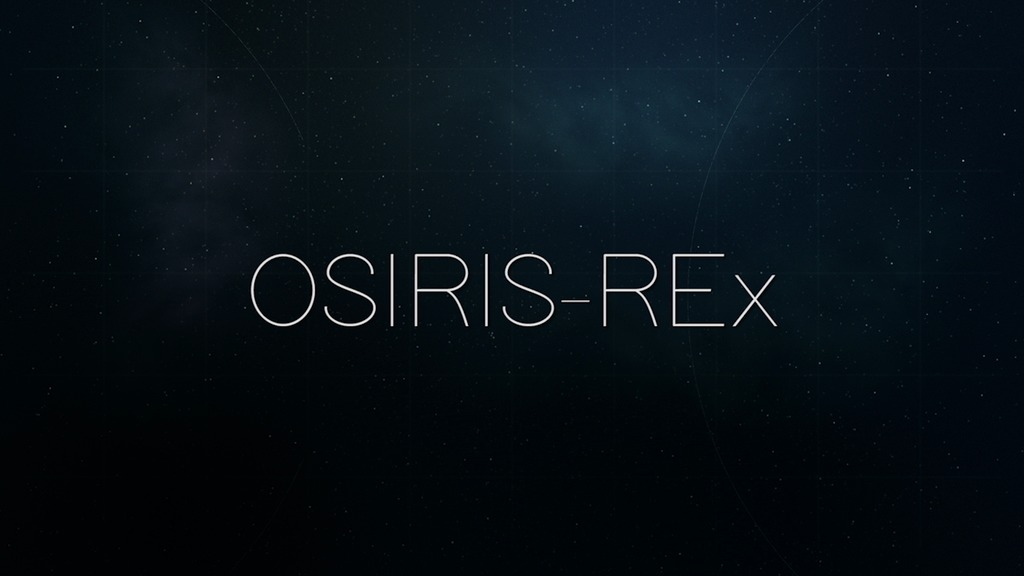
![To Bennu and BackMusic credits: "Defenders of the Earth" and "Finding Gaia" by Daniel Jay Nielson [ASCAP]; Atmosphere Music Ltd PRS; Volta Music; Killer Tracks Production Music](/vis/a010000/a012300/a012360/ToBennuAndBack_thumbnail.jpg)
